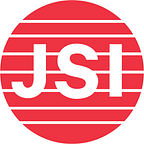For the first time, epidemic control for HIV is in reach for many countries.
In 2018, JSI’s teams worked tirelessly to stop the spread of HIV and help millions who are infected live healthy, productive lives. From training community health workers on appropriate care in the United States to building new clinics for testing and treatment in rural Zambia, check out the moments that defined another year partnering with local communities, organizations, and governments in pursuit of a world free from new HIV infections.
Zambia — Through the USAID DISCOVER-Health Project, JSI brought HIV services closer to underserved people in Zambia by building 35 prefabricated clinics to decongest government-run health facilities, reduce patient travel time, and improve quality of care in areas that are critical for HIV epidemic control, but are often underserved.
Global — Voluntary medical male circumcision (VMMC) programs increase men’s opportunities to seek health care — most importantly, HIV testing services. AIDSFree scaled up VMMC for HIV prevention in 2018 by harnessing technology to expand the reach of HIV interventions, developing new interactive tools and resources, and providing technical assistance on adopting WHO-recognized surgical and non-surgical techniques.
Guyana — Through Advancing Partners and Communities, JSI reduced HIV transmission in Guyana by creating and promoting animated public service announcements on HIV testing and treatment adherence that are designed to entertain while providing life-changing information for long-term health and behavior change.
Zambia — Under the USAID SAFE Project, JSI helped Zambia get even closer to reaching 95/95/95 by using targeted, high yield testing strategies like index testing and partner notification. In just the first program year, the Project tested 825,588 people for HIV, and immediately enrolled the 45,822 who tested positive on treatment.
Uganda — Using high yield HIV strategies, including index texting, assisted partner notification, and peer linkage facilitators at the community and facility levels, USAID Regional Health Integration to Enhance Services-North, Lango (USAID RHITES-N, Lango), linked 19,171 people to care and treatment in the Lango sub-region, where HIV prevalence is higher than the national average, in its first year of project implementation.
Mozambique — Beginning in June 2018, AIDSFree provided technical assistance to the Ministry of Health of Mozambique to develop social and behavior change communication materials to raise awareness, create demand, and provide counseling for target populations around pre-exposure prophylaxis (PrEP) to support the country’s national rollout of PrEP and scale-up of index testing.
Tanzania — By training and empowering community and local government groups to take part in the HIV response (such as community case workers as seen in the photo above) in Tanzania, more than 1 million people have been tested for HIV (and more than 90% of those who tested positive started treatment) AND more than 730,000 vulnerable children have been linked to services (including testing) as part of the Tanzania Community Health and Social Welfare Systems Strengthening Program.
USA — Community health workers (CHWs) can be the first point of care for people living with HIV. Through CBA@JSI, we offer training and resources on how CHWs may provide culturally and linguistically appropriate services to help clients negotiate the health care system and improve linkage to and retention in HIV care in the United States.
Ethiopia — Through quality improvement initiatives at health centers and capacity building support for urban health extension professionals, Strengthening Ethiopia’s Urban Health Program worked to ensure facilities and health workers are equipped to provide HIV testing and counseling services in their communities.
Tanzania/Zanzibar — JSI/AIDSFree’s Strengthening Police and Prison Comprehensive HIV Services activities address the need to provide priority populations — prisoners and prison staff as well as their families and the surrounding communities — with comprehensive health care in Tanzania and Zanzibar. At the end of 2018, more than three-fourths (77%, 2,943) of clients who had started treatment at the beginning of the year had been retained.
Guyana — JSI’s Advancing Partners & Communities Project helped build the capacity of local organizations like the Guyana Trans United, (pictured above) to build their resilience and ability to provide members of key populations with high-quality HIV services.
Ghana — Building on a network of local civil society organizations, JSI led the USAID Strengthening the Care Continuum Project in working closely with peer educators, legal advocates, and government officials to bolster Ghana’s system for reporting and prosecuting sexual and gender-based violence targeted towards members of key populations.
